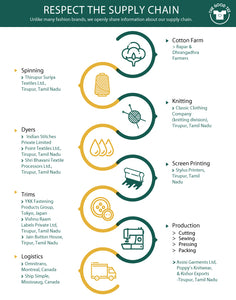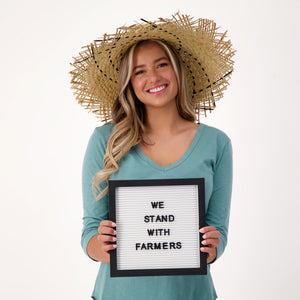LEARN PLANT-BASED HOME DYEING FROM EXPERT, ANIA GRZESZEK

When was the last time you sat in nature? Nature has the power to heal and bring us back to our true selves. Studies have proven that nature also has the power to stimulate our creativity. The shapes, sounds, colors, patterns are an array of mesmerizing and endless palettes. It's all about giving your brain a break from the daily grind of technology and taking a break from the daily stresses.
This season, our love for naturally dyeing fabrics at home is inspiring new techniques. As we were exploring the world of natural dyes, we stumbled across a magical unicorn. Okay, maybe not a true unicorn but she’s got the wow factor that will get you feeling inspired. Meet, Ania Grzeszek, the founder of the sustainable textiles brand Kaliko. Her career started as a full-time professional architect and transitioned to pursue her passion for fiber art and textiles five years ago and has not looked back. We sat down with Ania and here’s what she has to say.
1. Tell us a little bit about yourself and your sustainable journey so far.
My journey with fiber art started with weaving. I am self-taught and as a newbie, I was experimenting with different weaving techniques a lot. At some point, I had an idea of making my own colors on yarns and this is what sparked my interest in natural dyes. I was gaining more consciousness about climate change and sustainability at the time and dye plants offered beautiful colors without harming the environment. Dyeing fabric was a natural next step in the journey and I was lucky that my handmade plant-dyed bags sparked interest within my online community.
In 2016, I started Kaliko as a sustainable textile brand, and by the end of 2017, I quit my day job to pursue my passion full time. My goal with this business is to promote sustainable textiles and offer products that are made with respect for the planet and its people. I work locally, in small batches only and with female freelancers who help me out.
2. Do you have any serendipitous stories to share about a time when you were dying fabric?
Plant dyeing is almost like alchemy. You shouldn’t expect anything and you will be surprised so often! At the beginning of my journey, I collected some beautiful red leaves. I extracted the dye which was a gorgeous burgundy red in colour. But when I dipped a fabric in the dye pot for a few hours, the colour I got was a beautiful green!
With the leftover dye I added some more fabric The colour that I got the second time was red! With this little experiment, I discovered that all the green dye particles got attached to the first piece of cloth, leaving the red dye in the pot for the second dip. Every plant contains a number of different dyes and this is how I learned that.
3. What are your top 3 favorite plants for extracting natural dyes?
That’s a difficult question! They are all special! My all-time favorite is Goldenrod - it smells amazing, it grows in abundance all around Berlin and most people see it as a weed. But it makes bright, sunny yellow that is extremely long-lasting when applied properly. Another plant that never fails me is Alder Cone. It doesn’t need mordants to dye warm beige and it turns warm grey when treated with iron. My third pick would be Madder Root. We have a bumpy relationship, but if there’s one plant that taught me the most about the chemistry behind plant dyeing, this is the one! The pinks, reds, and oranges it yields are a pure joy to make. Last year I started growing my own madder plants and after three years it will be ready to harvest - I am excited!

4. What is your favourite natural dying technique and why?
It changes periodically, but at the moment it is bundle dyeing. The results are always exciting and surprising, it is great for covering stains, and there are endless color combinations and patterns that you can come up with. I am experimenting with it some more this year and just published a detailed bundle dyeing tutorial on my website for everyone to enjoy.

5. What is your favourite part about dying fabric naturally?
Collecting the plants is a very enjoyable process. It lets you get in touch with nature and explore the local flora. It offers a different view of the environment around you. I also love the end result. Plant dyes are just so beautiful and pleasant for the eyes. They compliment each other perfectly and they look great against the human skin. I never made a color I didn’t like.
6. What is the one thing that keeps you inspired?
The process propels the inspiration. Staying curious and active is key.
The more I learn, the more there is to experiment with and the more ideas I get. It’s a lifelong journey and I will be inspired as long as I am creating and learning.
7. What is a common mistake a beginner makes with natural dying?
Using non-lasting dyestuff and wrong fixatives. Cabbage, black beans, beetroot, and most of the flowers will fade, no matter how you fix them. Salt and vinegar also won’t fix the colors. These are very common misconceptions, often repeated online and spread widely. Plant dyeing is a complicated craft with a lot of variables. It is not easy to navigate it when you are first starting out and try to make sense of the (mis)information published online. That’s why I wrote an illustrated pocket guide for beginners, which is only eight pages long, and introduces them to the main concepts in plant dyeing, without overwhelming them. I wished someone shared these tips with me in an easy to digest way when I first started dyeing!

8. Do you have a link to your website on the steps to naturally dye a cotton T-shirt or can you explain?
Before you begin, set an objective. I firmly believe there is no wrong way of dyeing, as long as you are making an informed decision. The process will be different when you’re dyeing for your own closet and you can choose to overdye it anytime. But there’s a different process when you just want to have fun with kids. You wouldn’t have to care about the longevity of the color, but would want to skip the metal mordants. Also, when you’re dying for business purposes and have to offer high-quality coloring, you’d need to follow a different process.
The traditional dyeing process involving mordants and light-fast dye plants is always done in the following steps:
i) Start with cleaning the fibres. This process is called “scouring” and in this step you remove waxes and additives from the manufacturing process.
ii) Next, is mordanting, apply metal salts, for example aluminum acetate, to make the colors last. Each type of fiber calls for a different mordanting recipe. 5% Aluminium acetate solution works well on cotton but has to be handled with caution as it’s a fine powder.
iii) Mordanted fabric is then dried, and later dipped in a chalk solution (a calcium carbonate tie-dye fixer) and lightly rinsed right before dyeing.
iv) Next, extract the dye by simmering plant matter in a stainless steel pot for at least an hour. Anything between 10-100g of plant matter for every 100g of cotton will color the fabric. The intensity of the color depends on the amount and strength of the dye matter. For long-lasting color use plants that are known for their lightfastness. Refer to traditional literature. Madder root, weld, walnut hulls, oak leaves, cochineal, cutch, etc. will all make colors that last when applied properly.
v) Strain the dye bath and put the fibers into a dye pot, simmering again for at least an hour, until the desired color is achieved.
vi) Let the t-shirt dry and rinse after a week until the water runs dry. You're Done!
As mentioned earlier, plant dyeing is a craft of many variables and there are many things to consider. If you’d like to dive deep into the subject of setting an objecting and choosing mordants and fixatives, I just published an ebook on that topic. I was getting a lot of questions about that and because it’s a question that cannot be answered easily, I put it all in one publication. I include recipes, photos, and my thoughts on the subject.
9. What are your tips for a beginner who wants to dye at home?
✔️Educate yourself on safety before you start.
✔️Get a separate set of tools that you won’t use for cooking.
✔️ Always work in a well-ventilated room.
✔️ Research the toxicity before collecting unknown plants.
✔️ If you are dyeing for yourself, look into dye binders, like soy milk. The colors won’t be forever-lasting so it is not a good choice for business purposes but a good choice for personal projects. I recommend it for hobby dyers who don’t want to handle metal salts at home.
✔️✔️✔️ And, most of all - have fun! Enjoy the process, don’t expect anything and let the plants surprise you :)

Looking for the ultimate blank canvas to dye on - choose from our awesome Unisex Tees!
Contributing Author: Bhavya Jha








Leave a comment